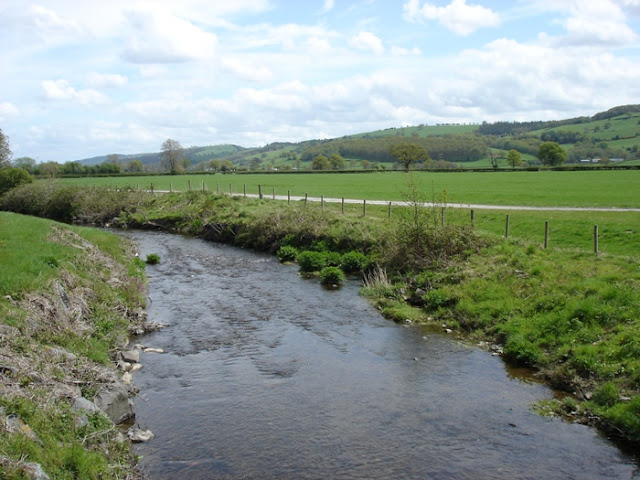Observant
readers of this blog may have noticed that, since our flying visit back in January,
there has been no mention of Scotland in my posts. Normally at this time of
year we would be well ensconced in the far North, celebrating not only Easter
but also my birthday and our wedding anniversary during our stay. This year,
however, we are tied to Wales by the impending construction of a conservatory,
for which we need to be at home, but haven’t yet got a start date.
Of
course it was lovely to celebrate Easter at the village church for the first
time in a number of years, but the really big bonus was that it meant DS and
Grandson#3 were able to spend Easter with us and give the new house their seal
of approval. They arrived in glorious sunshine on Good Friday and luckily saw
the garden and the river at their best, before the weekend’s rain and wind
arrived to keep us trapped indoors for the next two days.
Not
that the weather stopped us enjoying ourselves. We ate well, talked a lot and
played endless card games, but it made a pleasant change to wake on Easter
Monday morning to no rain and a clearing sky. On the spur of the moment DS
asked if they could stay for an extra day, so to celebrate this we decided to
go for a drive after lunch to show Grandson#3 some of the places his father
knew as a child.
DS’s
instinct is always to head for the hills and he had an ultimate destination in
mind. My instinct is to visit places of interest en route, so DH took us by
winding and scenic minor roads to one of these, a fascinating group of remains
of a once thriving local industry – lead-mining.
Bryntail is very much the best-preserved lead-mining site in the area and
gives a clear idea of what this industry once entailed. It has the added
attraction of being situated in a steep-sided river valley directly below the
enormous dam which helps to control the water level of a major tributary of the
River Severn and mitigate the Severn’s once devastating tendency to flood the small
towns downstream.
After
a very interesting wander round the ruins, we went back to the car and drove to
the viewpoint above the dam. This offers not only wonderful views over the lake
and the lead mine remains below the dam, but also one of the stunning panoramas
which are such a feature of this glorious corner of Wales.
From
here we drove along the lake and through the forest which borders it until we
came out onto the main road again at the far end of the lake. Soon after we
turned off onto a minor road which leads up over the Cambrian Mountains towards
the coast. We drove uphill past Dylife, once the site of a thriving lead-mining village,
onto the high plateau and into a different world.
Here,
at more than 1500 feet, the weekend’s rain had fallen as snow, and though it
was beginning to melt in the afternoon sun, there was still enough to transform
the landscape and enable DS and his son to have a very enjoyable snowball
fight. After that the two of them headed down the track to DS’s ultimate
destination, the Glaslyn nature reserve.
This is a area DS hiked and visited with his
friends as a teenager, and though the going was very wet, they followed the
track past the lake and up to the viewpoint, from which they had a panoramic
view north-west as far as Snowdonia, more than 40 miles away. When
they finally rejoined us at the car nearly two hours later, they were tired,
happy and had extremely wet feet, despite wearing stout walking shoes.
Now
that Grandson#3 is nearly a teenager, I foresee more visits during which DS
will take him out onto the hills, just as our son-in-law does with our other
two grandsons when they visit. All of them love hiking and hill-walking and
there are plenty of wild, unspoiled places here to explore. Sadly my ageing knees
mean that I can only accompany them over rough ground in spirit, but it’s
enough to know that our love for the wonderful Mid-Wales countryside is being
handed down to the next generation.























































